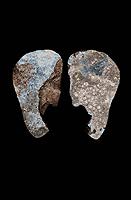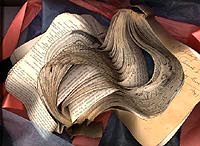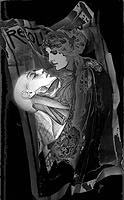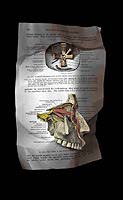

Douglas Holleley was born in Sydney, Australia. He gained a Bachelor of Arts Degree at Macquarie University, Sydney and subsequently studied photography at the Visual Studies Workshop in Rochester, New York, where he graduated with a Master of Fine Arts Degree. He has recently (1997) completed his PhD at the University of Sydney. The title of his thesis is Luna Park, the Image of a Funfair. This thesis examines a major amusement park in Sydney, Australia through the medium of photography.
He has exhibited widely in the USA, Australia and Europe. His work is represented in many collections including, the International Museum of Photography at the George Eastman House, Rochester, New York; the Australian National Gallery and Australian National Library, Canberra and in most State Art Galleries in Australia.
Most recently (1998) he was awarded a grant from the Australia Council, the federal government's arts funding agency to further his work in computer bookmaking. He lives and works in Ithaca, New York.
Conceptual Statement
The images in this CD ROM represent, represent from a technical perspective, an investigation to determine whether there may be such an entity as a digital aesthetic. The images are created by using a flat bed scanner to image three dimensional objects and other combined paper and object constructions directly from life. In other words, the first generation matrix from which either paper prints or electronic images are made, is an electronic file whose existence is first manifested on the screen at the time of scanning. Thus the images are intrinsically digital in the sense that they do not have any other a priori analog existence as would be the case with digitised photographs or video files.
For the most part this work is published in conventional book form where the images are presented on the comfortable, familiar and tactile material of paper. However, as the title suggests, there exists the possibility of a paradoxical, even quixotic relationship between the book medium and the CD ROM. Although the images first found their form on the computer screen, their usual form and the logic of their sequencing, is a function of their existence in (paper) book form. Thus the CD ROM version of these images is equally and simultaneously a more accurate representation of the genesis of the images but is at the same time a digital translation of the otherwise subsequent experience of viewing the images in the linear context of the conventional book form.
However, the initial issue was whether there is such a thing as a "digital aesthetic" in the same way that one can talk about a "photographic aesthetic" or the aesthetics of painting. Although the qualities of intrinsically digital forms of image production suggest that there may be image qualities that are unique to this medium, on balance my research would indicate that as this stage, and in the foreseeable future, the hypothesis remains unproven. If there is such a thing as a digital aesthetic then the strategy outlined, both in this staement, and in the work pictured in this CD ROM, suggests possibilities and technical strategies, rather than any indisputable fact.
The reason for this is most likely a function of the methodological approach adopted. Essentially this study imposed a modernist paradigm on a post modern phenomena. The modernist outlook is essentially based around the notion that each medium of expression is capable of being examined in a self-reflexive, formalist manner. Thus, in the case of photography John Szarkowski can argue the following claim.
"The pictures reproduced in this book (The Photographer's Eye) were made over almost a century and a quarter. They were made for various reasons, by men (sic) of different concerns, and varying talent. They have little in common except their success, and a shared vocabulary: these pictures are unmistakably photographs. The vision they share belongs to no school or aesthetic theory, but to photography itself."
Such a claim is difficult to make for images created on the computer. A computer is best described as a chameleon, or even more appropriately, a chimera. Its screen which seems so tangible, and basks in the descriptive metaphor of "the desktop", is a blown glass tube with a thin phosphorescent coating on the inside which makes visible, electrons emitted from a kind of "electronic gun". But its most salient quality is the fact that it is a vacuum, a container of the emptiest space. The central processing unit itself is similarly abstract. After lifting the lid one looks down at a miniature version of a modern city, with roads or pathways, points of intersection, and one can only imagine the invisible traffic of the electrical pulses which industriously shuttle back and forth as directed.
Thus an approach which asks this highly abstracted device for the processing of electrical signals to somehow "reveal itself" or "demonstrate its character" is perhaps doomed. Unlike the analogical relationship between patterns of light registered on the sensitive surface of the photographic negative, or the deeply ingrained imposition of ink pressed into paper by the pressure of the etching press, the computer deals only with a series of electronic codes which have no structure or qualities of their own other than to describe either a simple "yes" or "no" to represent, in the complexity of their accumulation, a command which the operator has requested.
Unlike adopting a modernist approach to photography or any other discipline, it is quite a different matter to ask this medium to reveal itself and its own characteristics. Like a mute object of desire, it answers such questions with a question of its own. It asks instead that the operator reveal him or her self. As a consequence the computer most resembles Narcissus' reflective pool of water; infinitely passive, revealing only that which it is asked to reflect. (or reflecting only that which it is asked to reveal)
With respect to content, the images manifest the dialog that occurs between memory and desire when love comes and goes as relationships change over time.


